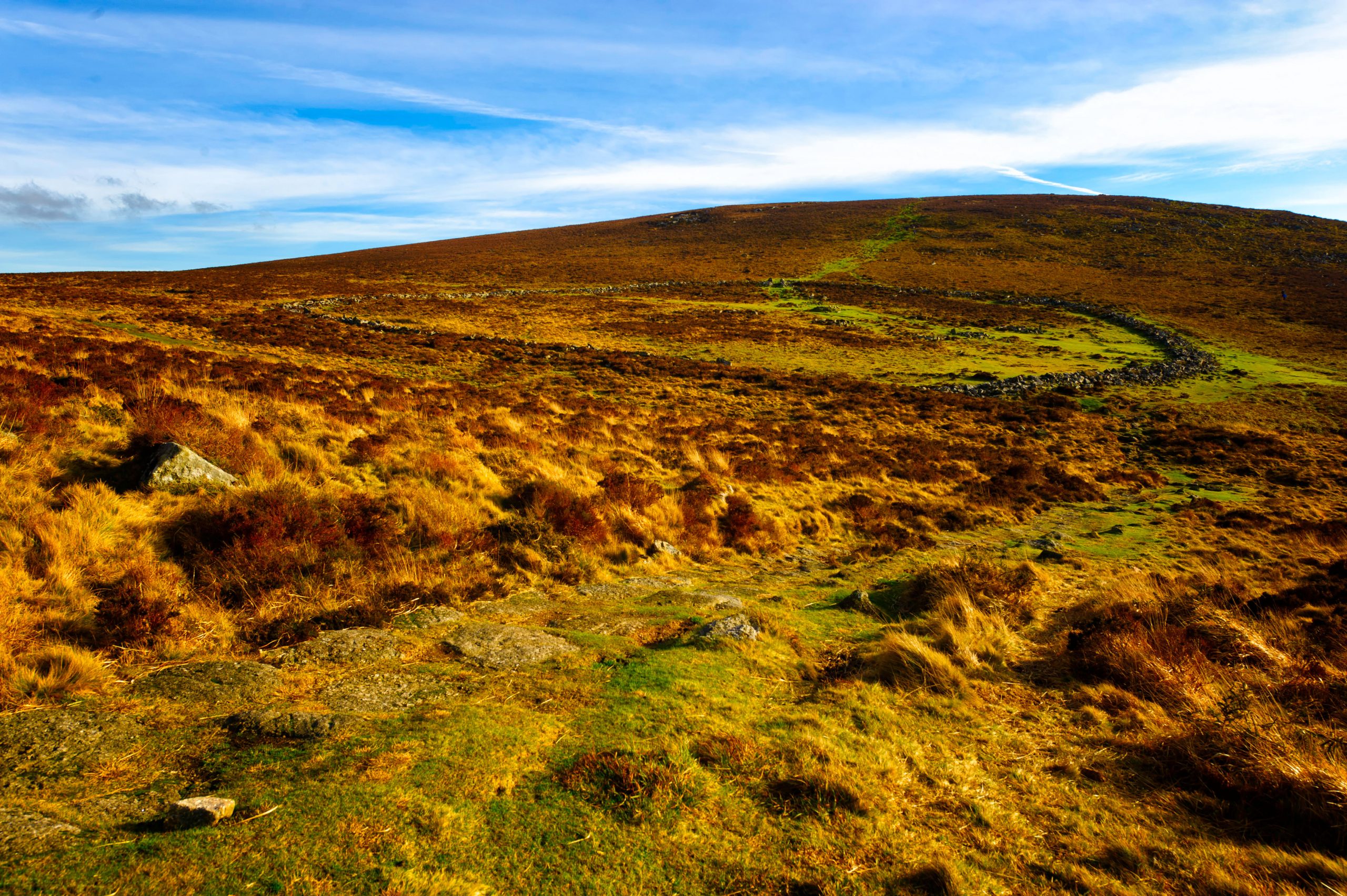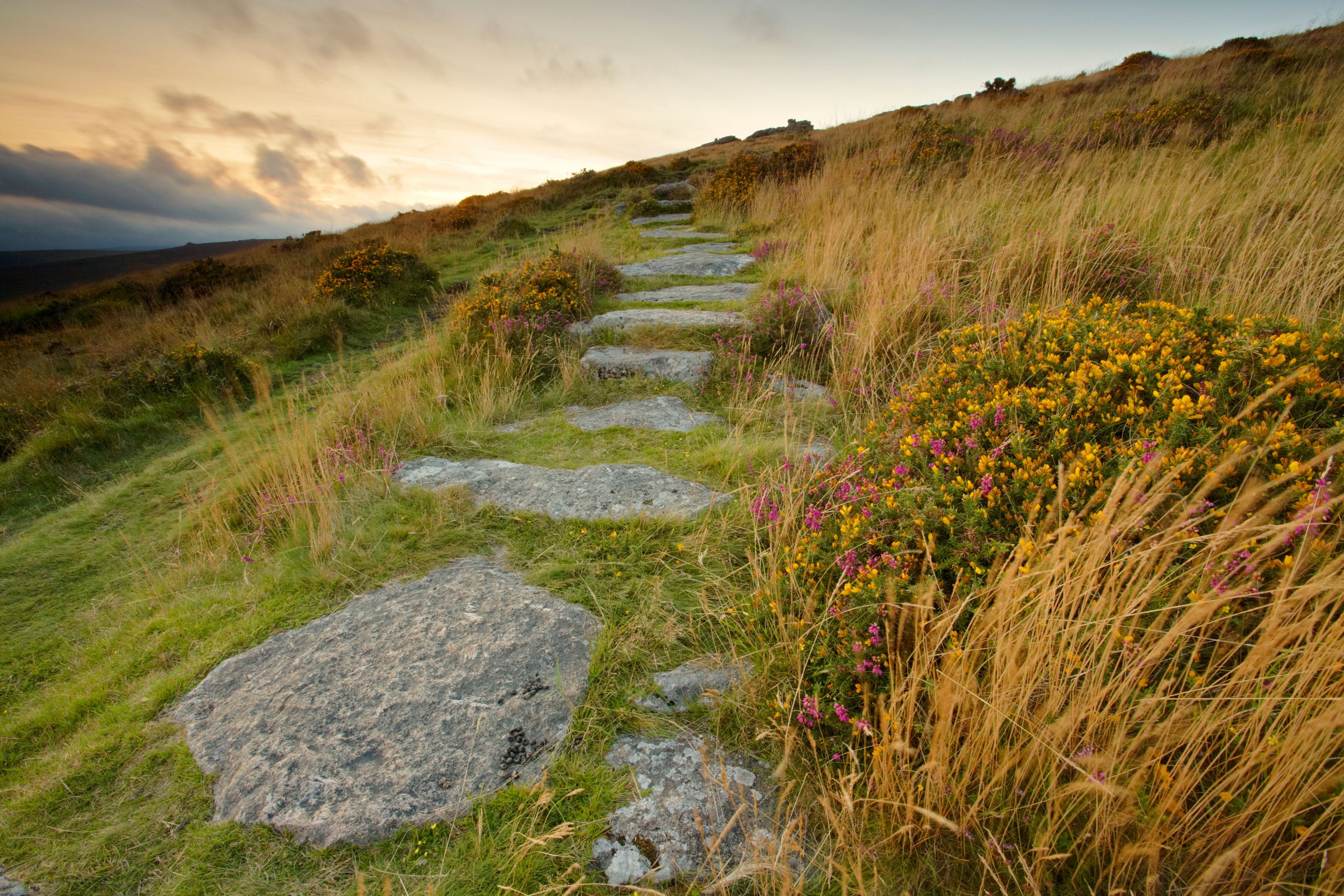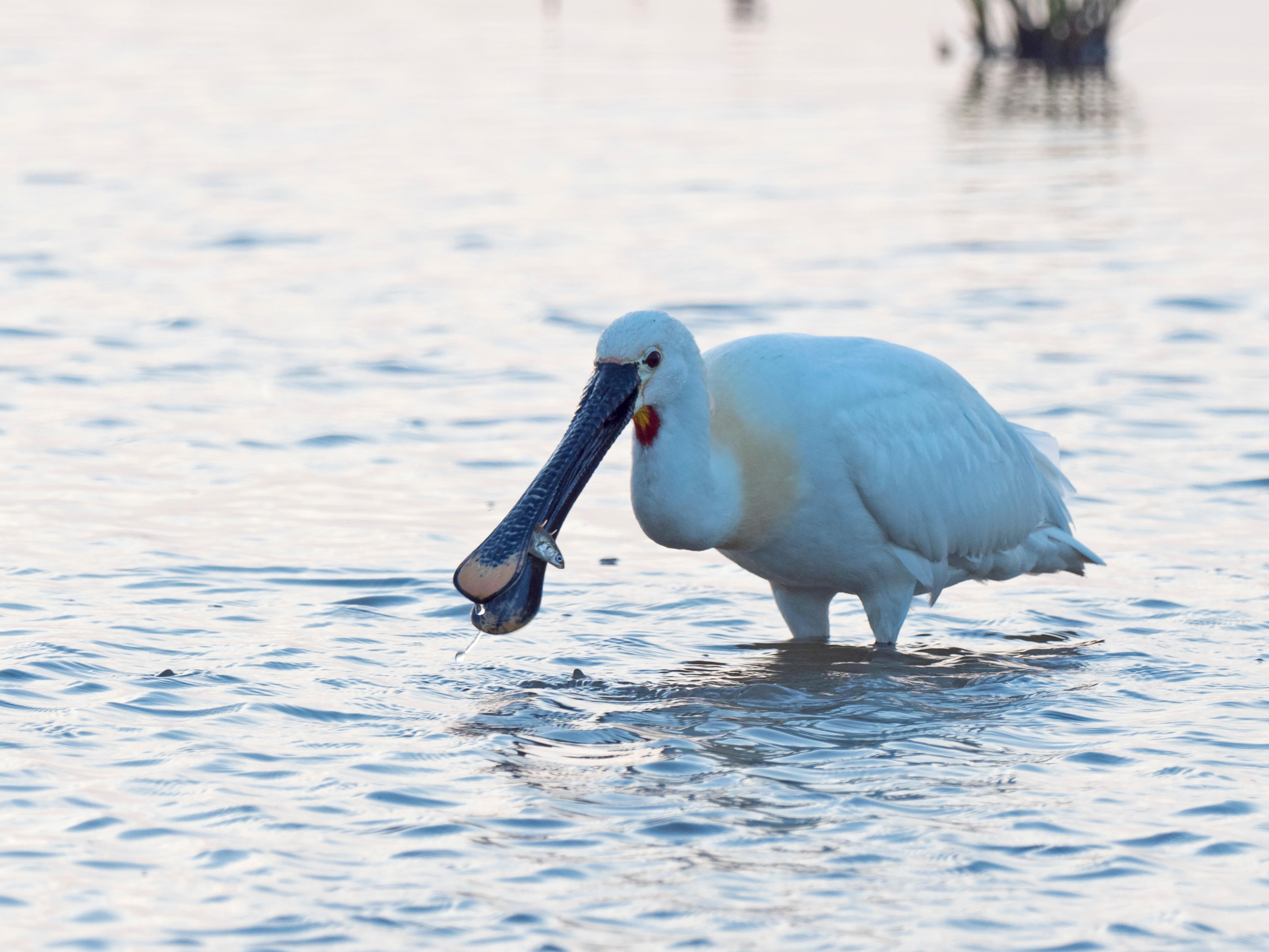Walking on Dartmoor: 'Ponies, sheep and cattle have created an extraordinary upland landscape, but there’s now fear among the commoners'
The people who manage the evocative Dartmoor landscape are facing challenges, says Fiona Reynolds.


Dartmoor is an enigmatic place of much beauty and many contrasts.
The huge, tor-laden bulk of the granite moors is the popular image, but the fringes are ineffably joyful: deep, lush valleys occupied by tumbling streams, heavy stone bridges and buildings; damp woodlands linked by tiny sunken lanes. We are staying at Lettaford, in a former non-conformist chapel.
This makes me comfortable, recalling my Methodist upbringing accompanying my father on Sunday evenings to the tiny, quirky rural chapels on the Rugby circuit where he preached. Lettaford is on the edge of the vast, open expanse, which you can access from a series of ancient byways that seem to ring the moorland.
Each morning, I rise early and take a different circular walk: from the village of Hurston over Chagford Common; from Heathercombe over Hameldown Tor and Grimspound back via Challacombe Cross; and, finally, in a long walk through wonderfully winding lanes, including a plunge to cross the Teign, from Lettaford to Teignworthy, up to Kestor Rock and onto Gidleigh Common.
Each day, I see more of the moor and its inhabitants: ponies, of course, and sheep, but also an impressive herd of Highland cattle up on Hookney Down. However, it is on my last walk that I learn the most, when I’m joined by an old friend from the National Trust, a visionary in the field of Nature conservation who’s just completed his PhD on the Dartmoor Commons.
What I learn first is that these remarkable access points to the moor (together, we see another, from Scorhill Farm) — great stonewall-lined funnels that open out as you ascend — are, in fact, the old ways of gathering and driving animals off the moor, to market, for transfer to lowland grazing to fatten or for treatment or branding.

Suddenly, I see the commons in a new light: a complex set of ancient rights, especially for grazing, which have existed for thousands of years and have somehow survived the modernisation of farming. Hefted ponies, sheep and cattle have created an extraordinary upland landscape, but there’s now real fear among the commoners.
Exquisite houses, the beauty of Nature, and how to get the most from your life, straight to your inbox.
Back in 1995, these long-time inhabitants were told, almost overnight, to halve stock levels on the moors, to prevent overgrazing. Disproportionately, cattle were lost and, as a result, it’s my friend’s well-evidenced contention that the moors are now undergrazed, with invasive coarse grasses, particularly molinia, replacing heather. In fact, huge swathes of heather have been lost and, with the imminent disappearance of the Basic Farm Payment and little detail on what will replace it, the commoners don’t see how they are going to survive.
We pass through the ancient landscape: the soaring Three Boys Standing Stone, lines of Stone Rows (Bronze Age ceremonial routes) and past Batworthy Corner to the medieval clapper bridge crossing the clear-flowing upper River Teign.
I’m shown how cattle grazing forces the molinia back, letting the heather regenerate, and I see that this is, above all, a cultural landscape, full of archaeology and centuries’ worth of farming and religious practices.
The ‘easy’ environmental solution — to plant the moor with trees — is so clearly wrong in contrast with finding a way to support the commoners to deliver sustainable, extensive grazing systems that will also bring them an income. This isn’t a simple box-ticking exercise, but needs a common-by-common recipe of payments to support the appropriate regime for each place.
We end our walk in the magic of Scorhill stone circle, feeling the weight of history and the future’s responsibilities on our shoulders.
As I walk back, over Kestor, to Teigncombe and through the endlessly winding lanes via the tiny, characterful settlements of Teignworthy, Yardworthy, Higher and Lower Shapley, Hurston, Lingcombe and Jurston (such lyrical names!), I’m enthralled by this landscape, moved by this challenge and driven by the urgent need to find a sustainable solution for the 90,000 acres of Dartmoor common land, their animals and their people.
Fiona Reynolds is Master of Emmanuel College, Cambridge, and author of ‘The Fight for Beauty’

Tracking the Norfolk spoonbills: 'We’ve hardly walked a mile before a string of three white birds flies towards us'
Fiona Reynolds visits the wilds of Norfolk to find spoonbills — and discovers a remarkable conservation success story.
Fiona Reynolds is chair of the Food, Farming and Countryside Commission, the former director-general of the National Trust, former Master of Emmanuel College, Cambridge, and the author of The Fight for Beauty. Follow her on Twitter @fionacreynolds.
